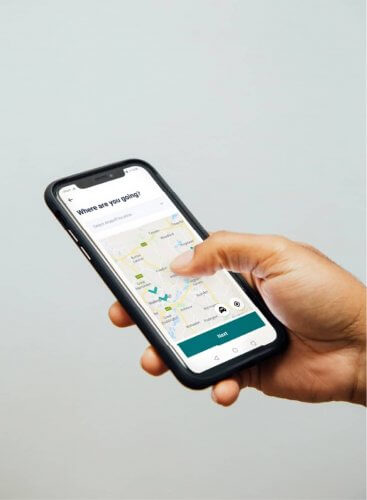A new app is using satellite data from an unlikely source to help reduce emissions and improve journey times
An on-demand transport app is helping cut journey times and emissions. The app, Tandem, uses satellite data and information on people’s journeys to create personalised shuttle services, aiming to facilitate more efficient travel options. Passengers can
enter their destination and pick-up time into the Tandem app which then matches them to shared journeys and dispatches an appropriate vehicle.
Emily Gravestock, Head of Applications Strategy at the UK Space Agency, explained: “We see this as a new way of getting the bus. This app is ideal for supporting people in rural areas who are unable to do things like go to work or college, or see friends, because of limited bus timetables. By harnessing the power of space this app is providing a better transport service for its users and helping the environment by making journeys more efficient and cutting carbon dioxide.”
As well as a Transport for the West Midlands pilot, Tandem is helping other companies – including the Royal Mail, fashion retailer Primark and bookseller Waterstones – to ferry their employees to work.
Alex Shapland-Howes, Chief Executive of Tandem, said: “Across the country, employers are struggling to attract workers. Transport is a genuine barrier to filling roles in out-of-town industrial estates, business parks or even in town centres if the workers live elsewhere. We’re already seeing huge demand from employers looking for help to get workers to fill their roles.”
The pilot project was completed with the support of ESA Space Solutions, which helps European businesses devise space-based ideas in every area of the economy. Nick Appleyard, Head of ESA Space Solutions, said: “The most sustainable and cost-effective bus journey is when the bus stays in the garage. The next best is when the bus is full and takes the passengers directly to their destination. Tandem can get us closer to that ideal, with a service that reacts each day to the number of passengers wanting to travel, and to where they want to go. We are grateful to Transport for the West Midlands for trialling this on its network, and we look forward to the results of the pilot.”


